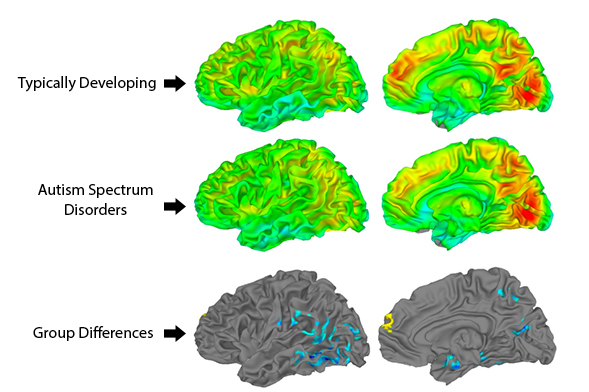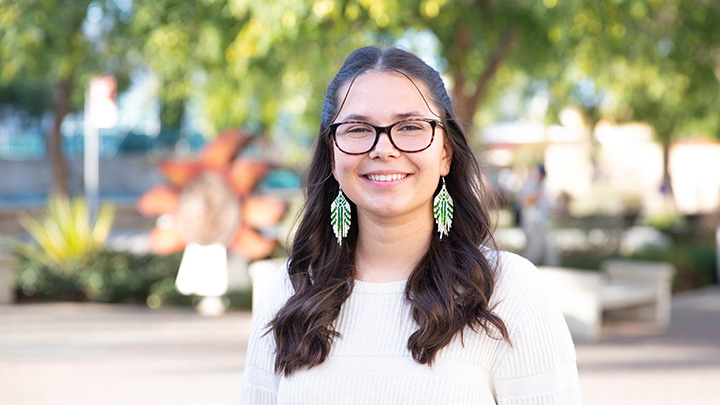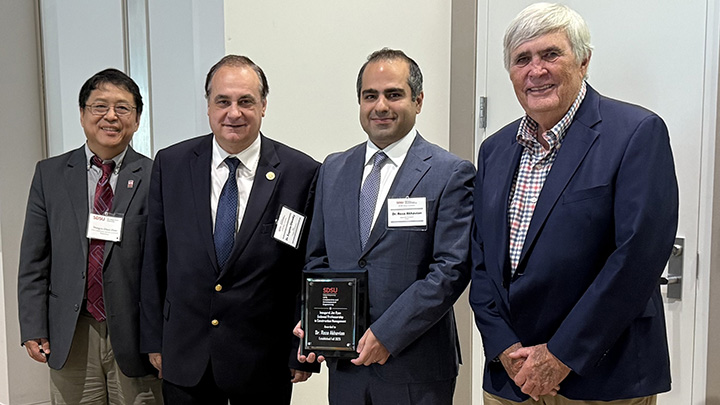Autism Research Uncovers Brain Connections
A $600K award will fund an SDSU scientists research on brain network connectivity in autistic children and adolescents.

San Diego State University psychology research professor Inna Fishman is embarking on a study to identify the differences in brain networks of children and adolescents with autism and those who are typically developing.
The research, supported by a four-year grant totaling $600,000 from the National Institute of Mental Health, could help with early-detection, diagnosis and treatment of children with autism.
“The results of this study will help us understand how brain networks are organized in typical and atypical development, which is instrumental for developing innovative treatments for autism ...”
Brain networks
Scientists have found that the human brain is organized into a collection of several networks that work together to support various behaviors and functions.
Researchers have identified that at least two of those networks are linked to social behavior. These two social brain networks are activated when trying to make inferences about others’ feelings, emotions and intentions.
“There is evidence that individuals with autism spectrum disorders have atypical brain connectivity,” Fishman said. “Some brain networks show increased or over-connectivity, while other networks show decreased or under-connectivity.”
Fishman’s research will help demonstrate whether this atypical connectivity within, as well as between the two social brain networks links to the impaired social functioning characterizing autistic children and adolescents.
Making connections
Despite a great deal of research devoted to understanding autism spectrum disorders, large-scale studies of brain network connectivity in autism using multiple brain imaging methods are rare.
The grant will allow Fishman, along with SDSU psychology professor Ralph-Axel Müller, to study a total of 160 children and adolescents, 80 with autism and 80 who are typically developed, from the ages of seven to 18.
She will use two neuroimaging techniques to make inferences about brain network connectivity: functional Magnetic Resonance Imaging and Diffusion Tensor Imaging.
Fishman will examine the connectivity within and between two key social brain networks in both groups, exploring the relationship between age and brain organization.
“It will be interesting to see whether the atypical connections will have already been formed by age seven in children with autism, or whether they will continue to diverge from the typical pattern throughout late childhood and adolescence,” Fishman said.
“The results of this study will help us understand how brain networks are organized in typical and atypical development, which is instrumental for developing innovative treatments for autism, such as neurofeedback, aiming at reorganization of atypical brain connections.”
The research includes an alliance with the Center for Autism Research, Evaluation and Service and University of California, San Diego.
Detailed description of image:
Brain images show local brain connections in typically developing adolescents and adolescents with Autism Spectrum Disorders (ASD), as well as group differences. Adolescents with ASD show overconnectivity in visual regions at the back of the brain (blue regions), but underconnectivity in a part at the front of the brain that is involved in highest levels of cognitive control (yellow region).
(Image provided by Ralph-Axel Müller, Christopher Keown, Patricia Shih, Aarti Nair and Nick Peterson, in preparation for journal submission).



